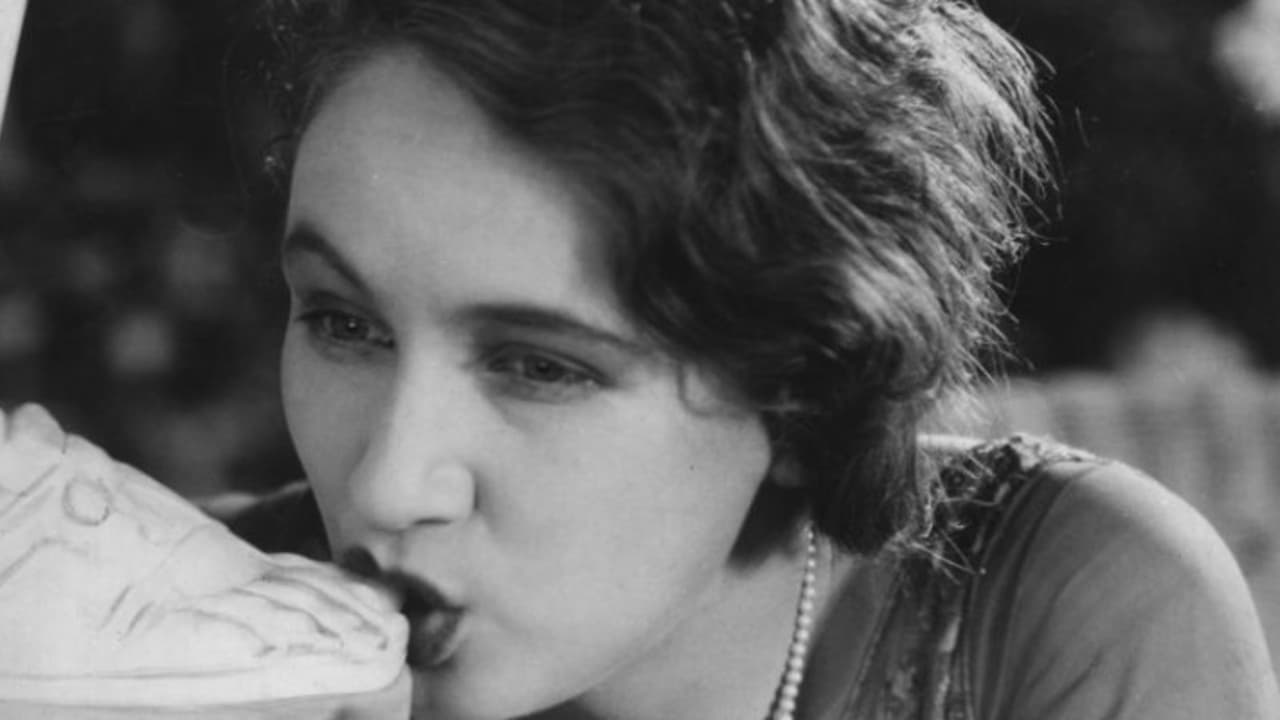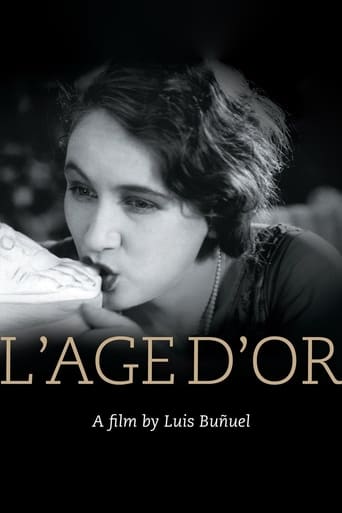

The Man (Gaston Modot) and the Young Girl (Lya Lys) go through the film consumed by passion for each other. They long to be together but their moments together are constantly interrupted. The film is strewn together with imagery and comes to a halt after an hour.........do the lovers find happiness....?..The film starts interestingly with footage of scorpions but you soon realize that its all a pretentious piece of nonsense. It's made as a silent film with occasional dialogue and it has a non-stop soundtrack playing that at one point is so irritating that you will turn the sound down and want to watch it as a silent film. The continuous drum rolls must have driven cinema audiences mad. There are some genuinely funny moments, eg, when the Man kicks a dog and when he knocks over a blind man. Unfortunately, this humour is carried out in the name of art so its just pseudo nonsense. The film is crap.
... View MoreLuis Bunuel was certainly a film maker who's films were a lightning rod for controversy. His first silent short, 'Une Chien Andelou'(with a screenplay written with Salvadore Dali)from 1929 was both a hit for audiences,as well as for psychologists who had a field day picking the Fraudien images apart. Despite a falling out with Dali during the screenplay writing phase for their next project (resulting in the two never talking to one another for the rest of their collective lives),Bunuel still,none the less,kept Dali's name on the credits (Dali also kept distance from the film,as well). The results were 'L'Age d'or',from 1930,which was an obvious attack on the ruling class,and it's tight moral structure, regarding sexuality. The film also took a number of pot shots at religion,family values,and other material that enraged French audiences so that in it's premiere,a full tilt riot broke out at the cinema that screened it in Paris. Because of this,the film was banned for over 50 years. To look at it now,it still packs a bit of a punch. The images are very surreal & dream like (i.e.it begins with what looks like a documentary of scorpions,and cuts to a totally unrelated series of short stories). This is a film that historians should see, as just what ticked off audiences back then. Besides the film's mostly French cast,it also features fellow surrealist artist,Max Ernst,in a small role as a bandit chieftain. Spoken in French with English subtitles. Not rated,this film does serve up some material that by today's standards would land it little more than a PG rating today (a few brief flashes of semi nudity,various sexual goings on,etc.),but shocked many back in the day.
... View MoreIf you're knowledgeable about Bunuel's body of work, then you'll see pretty much the blue print for his future films, with all of his views on religion, unrequited lust and love/hate for the bourgeoisie. I agree with those who loved it yet, at the same time, I feel people missed Bunuel's point. Bunuel wanted a complete affront to the senses of that audience. If that sounds childish, well... Anyone could argue the easiness of taking shocking images and filming them and then claiming to be a genius is really dumb. But there is a sense of flow and rhythm to the images; this is not just a disparate collection of things to look at.Yet still one does not have to scratch his/her head in bewilderment as to what it all means. Does anyone complain about a Dali painting and his skewing of reality? Maybe, I don't know. But it's the same thing here. There are lots of grotesque, funny and sublime sequences. And though it doesn't necessarily flow as a cohesive narrative which has a straightforward, underlying message, it's clear which social mores that Bunuel/Dali are criticizing. If you're versed in Bunuel, he'd be the first to tell you that his images are not supposed to be symbolic. If you see a peasant on a horse and carriage riding through a Marquis De Sade castle, then that's exactly what you're seeing.As such there is an image of man executing his son, an image of another man brutally kicking a blind man, a cross with human scalps, a toilet making sewer noises cut between images of a man rolling in mud, which looks a little too much like...
... View MoreIf you'd like a great April Fool's joke, then please by all means show this film to someone. However, it is important that you in no way criticize the film but instead talk about what an artistic triumph it is and how "they just don't make great films like this any more". As your victim watches many disconnected and nonsensical scenes (such as a cute dog getting punted for no apparent reason, a cow standing on the bed, a woman licking a statue's feet or Jesus apparently raping a woman), make lots of comments using words like "brilliance", "juxtaposed" or "transcendent"--all the while acting as if the film actually makes perfect sense and isn't a complete waste of an hour of your life. Also be sure to keep a straight face and feign shock when (and if) they say that they either didn't understand it or thought it had all the artistry of a cow patty. Then, to further mess with them, show them all the comments on IMDb, as nearly all (except for a few trouble-makers like almagz and rooprect) talk glowingly about what genius and artistry this film is! By the time you are done with this little charade, they'll most likely think they are idiots and will make an appointment with a psychologist. This, to me, is the ONLY possible reason to watch this horrid mess of a film!!! That, or you could show it to the prisoners at Guantanamo in order to get them to talk!If you ask me, the famous painting of dogs playing poker or a velvet Elvis painting are superior artistically.
... View More